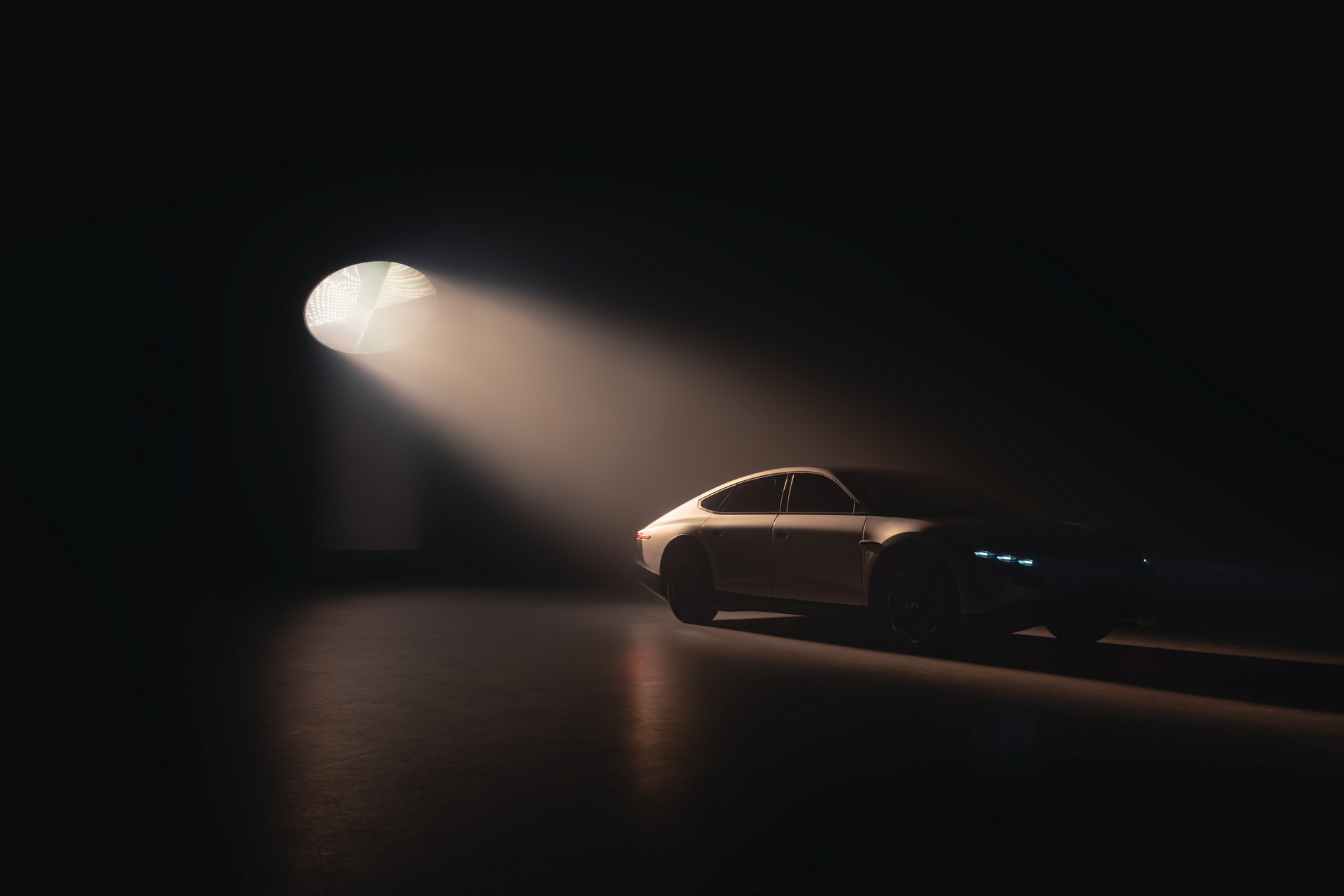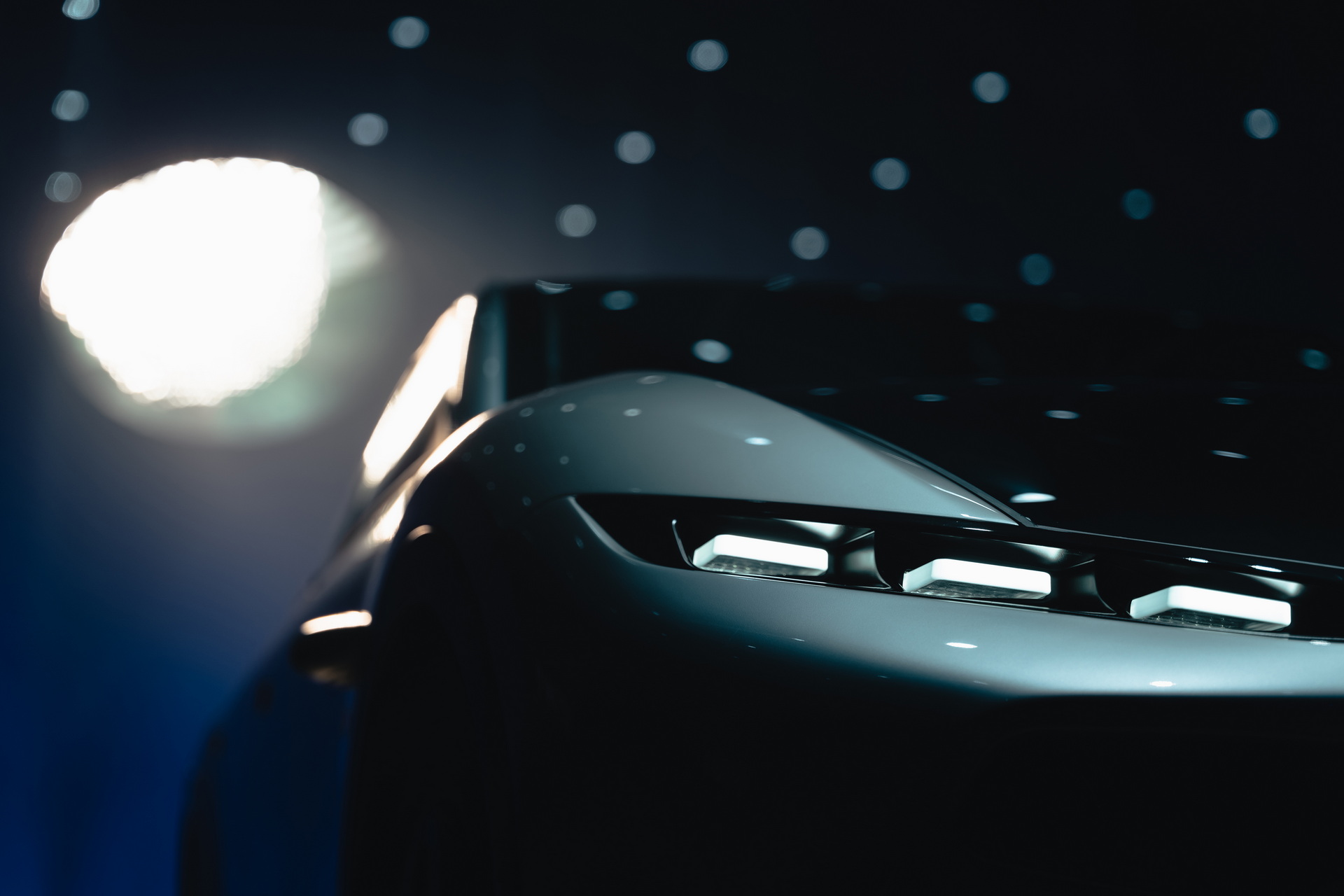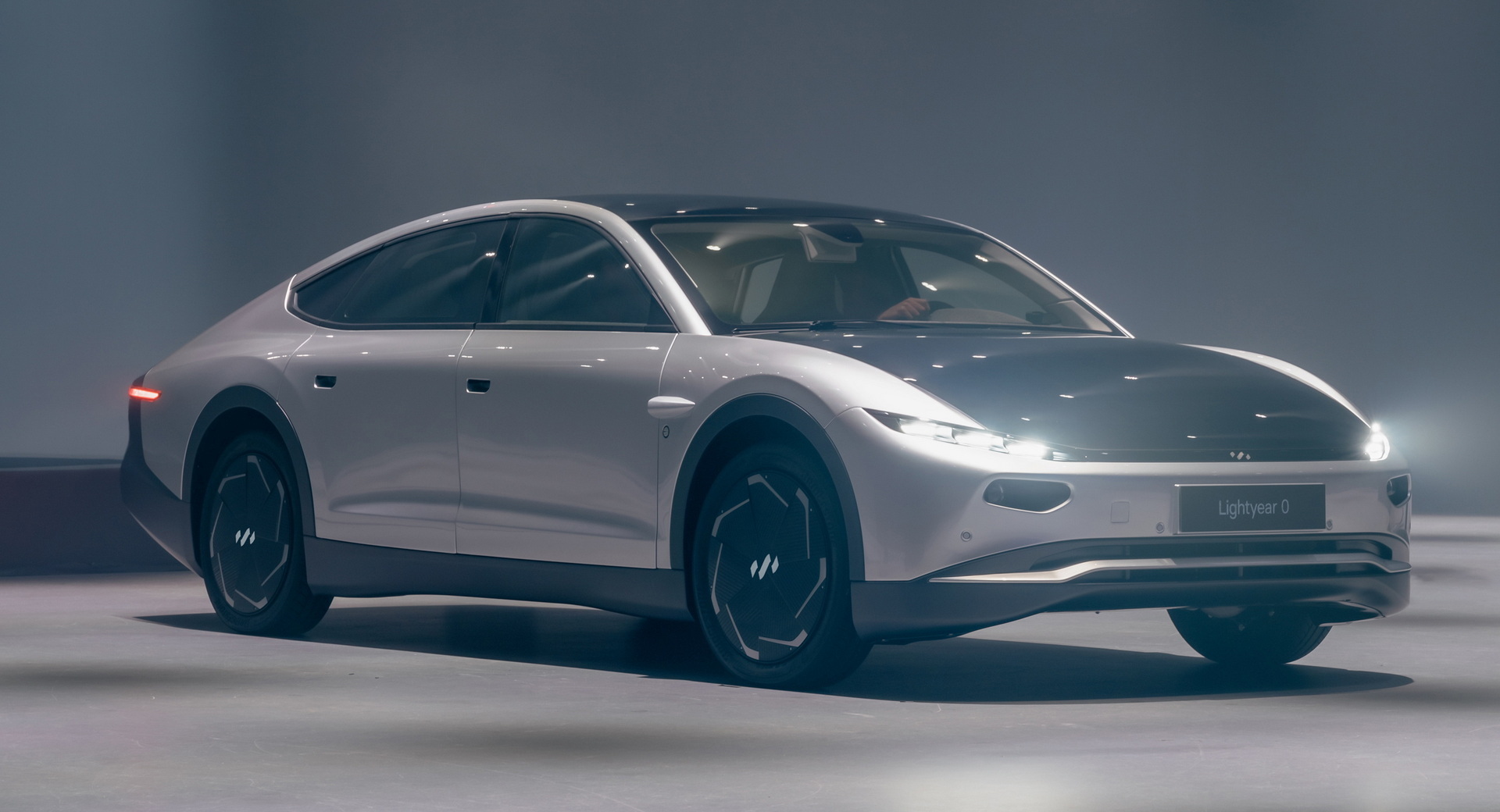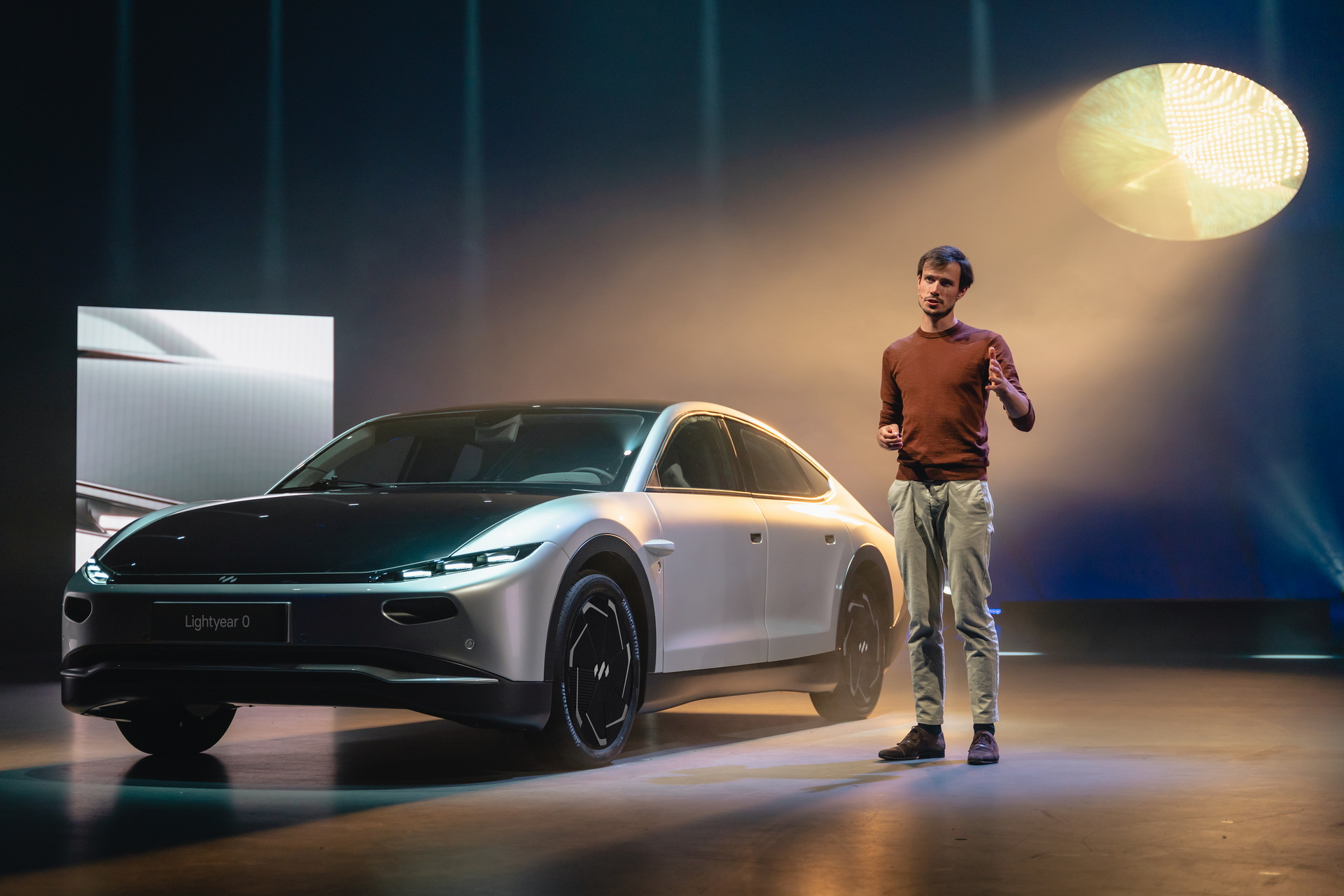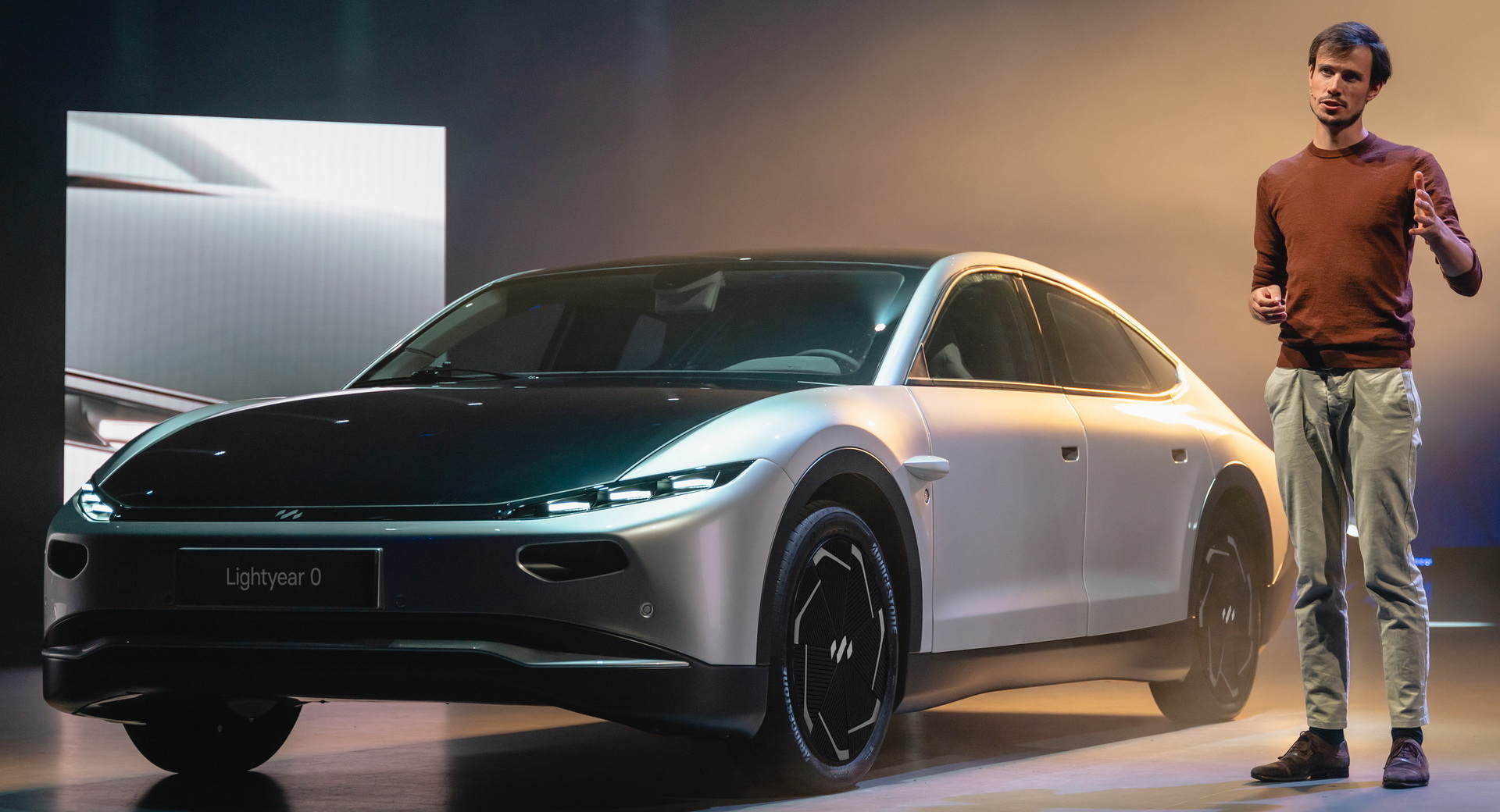Dutch startup Lightyear hopes to push the electric vehicle market into the future with its new car, the Lightyear 0. Not only will the EV feature in-wheel motors and aerodynamic design, but it is also covered in solar panels to help it go as far as possible.
Far from being some pie-in-the-sky concept, Lightyear promises that production of the 0 will begin this fall. It adds that first deliveries could begin as early as November.
“Today is the day we’ve all been waiting for since us five co-founders sat in a kitchen sketching out our dream of building the most sustainable car on the planet,” says Lightyear’s co-founder and CEO Lex Hoefsloot. “In 2016, we only had an idea; three years later, we had a prototype. Now, after six years of testing, iterating, (re)designing, and countless obstacles, Lightyear 0 is proof that the impossible is actually possible.”
Read Also: Lightyear Two Announced, Arrives In 2024 / 2025 With €30,000 Price Tag
To start with, Lightyear has attempted to make as efficient an EV as possible. The shape of the vehicle gives it a drag coefficient of 0.19, which compares well to the Mercedes EQXX concept and should make it the most aerodynamic family car on sale when it comes out.
As well as being slippery, it’s also pretty light. Weighing in at just 3,472 lbs (1,575 kg), it’s only slightly heavier than a Toyota Supra. That’s despite it measuring in at more than 16.4 feet (5,000 mm) in length, just a little less than a BMW 7-Series.
That size allows it to have 54 square feet (5 square meters) of patented double-curved solar arrays, which allow the Lightyear 0 to charge any time it’s under the sun. The automaker claims that the vehicle has a solar yield of up to 6,835 miles (11,000 km) per year. In optimal conditions, it can recoup up to 43 miles (70 km) of range per day from the sun.
That, Lightyear reckons, means that people using their car for an average daily commute (which it estimates to be 22 miles [35 km] long) could go up to seven months between charges in sunny countries. Although that’s a best-case scenario, it believes that even Dutch customers could go up two months at a time between charges if they park their Lightyear 0 outdoors.
Ignoring the solar charging, the automaker estimates that the car will have a WLTP range of 388 miles (625 km) per charge. At highway speeds of 68 mph (110 km/h), meanwhile, it estimates that the car can go 348 miles (560 km) before running out of juice. That’s thanks to the aerodynamics and to the highly efficient motors, which are placed in the wheels. The automaker claims its drivetrain is the most efficient in an EV right now, using just 10.5 kWh of energy per 62 miles (100 km) at highway speeds.
And it’s not even some spartan prototype inside. Lightyear promises that the 0 will have a 10.1-inch touchscreen that can be updated over the air. Materials, meanwhile, will be entirely vegan and it is using naturally-sourced textiles like microfiber suede seats and rattan palm detailing.
All of that does come at a price. The automaker said today that the Lightyear 0 will start at €250,000 ($263,243 USD at current exchange rates). It will also produce just 946 of them per year. It does plan on making a related model, though, that will be aimed at mass-market audiences with a starting price of €30,000 ($31,589 USD). Production of that car will start in late 2024/early 2025.





